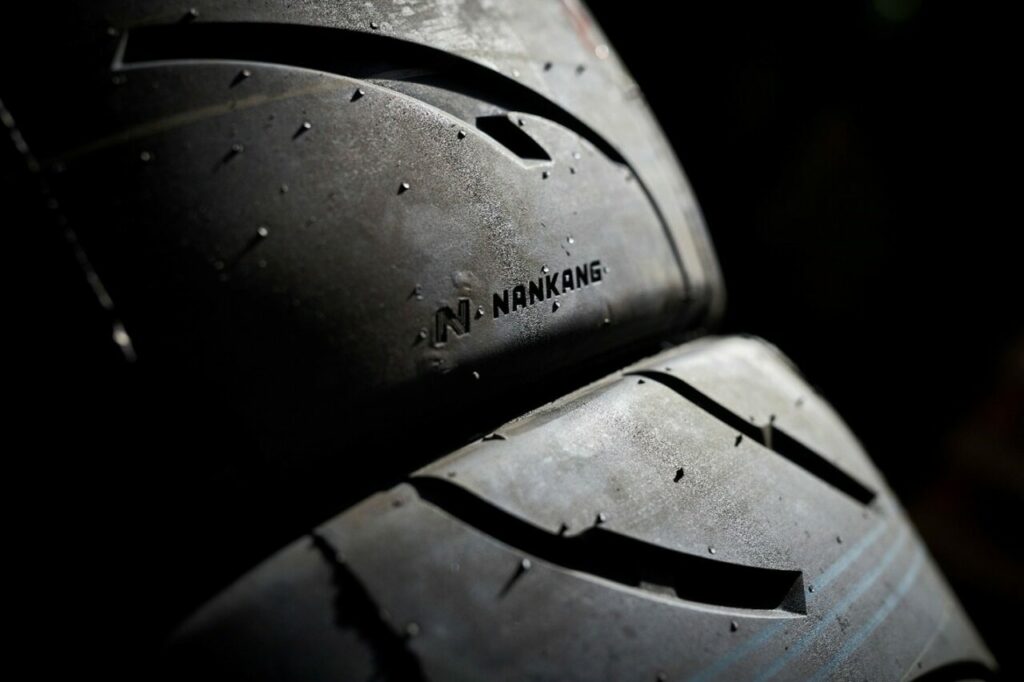
Tyres. They are black, round, and made of rubber – but that is not all. As they provide important grip on the road, it is not as simple as just selecting a racing tyre which looks good or has the correct size. There is a lot more to them than that.
So, what do you need to know when looking at what tyres to buy? Well, in this article, we will be exploring the various things to look for when selecting what competition tyres to buy and how to get the most out of them.
Understanding tyre regulations
Trying to find a suitable tyre for your type of competition can appear to be a difficult task, so, let’s take a look at what you need to know regarding your available tyre choice. The first thing to do is to consult the regulations that are set in place by your relevant motorsport governing body. For competition in the UK, these regulations are set by Motorsport UK.
As part of these regulations, the governing body have formulated a series of lists which contain tyres that are suitable for various types of competition. Examples of these being List 1A which includes all tyres suitable for production based championships, Lists 1B and 1C which are sports or uprated tyres which are suitable for competition and many others which are suitable for off-road events such as rallying, cross country and mud terrain.
Your chosen championship will allow the use of tyres from these lists, but you will need to check which lists they allow before selecting your new tyres. There are some championships that may run a control tyre which all entrants must use. If this is the case, then it makes your tyre choice much more straightforward.
If your chosen championship allows for a choice of tyres which can be used, then read on as there is a lot to think about.
What tread pattern should I use?
One of the first things that you will notice when looking for tyres is the diverse range of tread patterns which are available. With many of them having a very similar appearance, making a choice can become difficult.
However, do tread patterns really make a difference? Well, yes, they do. To lay it out in simple terms, you can group the different tread patterns used for circuit racing into 3 groups. Dry weather tyres, fully wet weather tyres and multipurpose tyres. For rallying, there are two types of tyre available, gravel or tarmac tyres.
Circuit Racing Tyres
Dry weather tyres
If your chosen championship allows it, there are tyres available which are only suitable for use in dry weather. Commonly known as slicks, these tyres have no grooves whatsoever and feature a completely smooth surface; the advantage of this being a larger amount of rubber being in contact with the road surface which provides a very high level of grip in dry weather.
However, as soon as water appears on the racing surface, and the tyre temperatures start to drop, these tyres will quickly lose their grip. This is down to not being able to cut through or clear the water from the surface of the road.
Wet weather tyres
Having the sole purpose of being used in wet conditions, these tyres have the most aggressive tyre tread pattern available. Featuring deep vertical grooves to help cut through the standing water and a series of curved grooves to help shift a large amount of water outwards, and away from the road surface under the tyre, wets, as they are affectionately known, are designed to provide the best grip in the worst conditions.

Multipurpose tyres
Also known as semi-slicks, these tyres feature a combination of grooves, but not to the same extent as full wets. This means that, although they are treaded tyres, there is still a large amount of tyre surface area in contact with the tarmac to provide high levels of grip in the dry, but enough channelling to cope with wet conditions without aquaplaning. They are good all-round tyres which are ideal for championships where pit stops are not possible.
Rally Tyres
Tarmac tyres
Even if you are competing on a tarmac rally, you cannot always guarantee that you will have an ideal road surface to run slick tyres. Long stages with the potential for weather changes and the possibility of gravel on the surface, mean that slick tyres may become dangerous to use. This is why tarmac rally tyres feature grooves cut into the tyre to provide some grip in wet or slippery conditions.
Gravel tyres
These tyres feature a more aggressive tread block pattern, designed to cut through the gravel and mud found on forest stages. This increases traction and braking stability on loose surfaces. Gravel rally tyres also tend to feature reinforced sidewalls to help protect from cuts and punctures which can occur with the amount of sharp rocks found on gravel roads.
What tyre compound do I need?
Some of the tyres which are more geared towards competition or track day use are available in various different compounds. These compounds are usually referred to as soft, medium, or hard, relating to the construction of the rubber tread. As a general rule-of-thumb, softer compounds offer a greater amount of grip but don’t last as long, while in contrast, harder compounds tend to provide better life at the expense of grip.
However, it is not as straightforward as simply choosing a soft compound because it has the most grip, there are a lot more variables which need to be considered including surface type (smooth or abrasive), weather conditions (wet, damp, or dry) and temperature.
For rallying, there are more variables to consider when choosing what compound to run. For tarmac tyres, the requirement to run in both wet and dry conditions means that you will need to find a compromise between the surface type and weather conditions to find the correct compound. In general, softer tyres are better in wet or damp conditions, but they will wear out quicker if the road surface is abrasive.
The surface types to consider are slightly different when competing on gravel. As the road conditions evolve over the course of a rally, they can change from being soft surfaces to harder, compacted surfaces which yield a different level of grip. This combined with the weather conditions makes for a more involved decision on what compound to use.
As a general guide, you can refer to the tables below for how these different conditions affect the type of tyre compound that you should use.
Maximising tyre performance
There is more to improving the grip from your tyres than simply selecting the best compound for your particular requirements or application.
As tyres are a highly dynamic part of the car, their effectiveness is dependent on a number of factors that you need to be aware of in order to fully understand how a tyre behaves and why.
The contact patch
As your tyres are the only form of contact with the road, they have the sole responsibility of maintaining sufficient friction to keep the car moving forward in the correct direction.
Even though, at face value, the tyres are quite a large item, the actual amount of tread which is in contact with the road is relatively small. In fact, when each tyre sits flat on a surface, the amount of tread which is in contact with the road is only about the size of an A4 sheet of paper, and less for smaller tyres.
So, getting the most from this very small surface area of tyre on the road is critically important.

Understanding the effects of tyre pressures
We know that tyres need air in order to function correctly, but it isn’t just a case of putting any amount of air in the tyre and off you go.
The amount of air inside a tyre changes the amount of pressure acting on the carcass of the tyre. As there is a degree of flexibility in the rubber, the amount of pressure acting against the inside of the tyre can change the profile and, ultimately, the contact patch.
Once you have set the amount of air pressure that you want in the tyres, however, it isn’t going to stay that way once you start driving. With the tyre rolling over the surface of the road this creates friction which, in turn, creates heat. A small amount of heat is also generated by the air molecules moving about inside the tyre. This increase in heat will also increase the tyre pressure meaning that your hot tyre pressure is going to be different to your cold tyre pressure. Therefore, if you have set your tyre pressures to provide the optimal contact patch and grip level when the tyre is sat still in the paddock, the chances are that once you start driving, that the handling characteristics are going to change once the tyres heat up.
Too much heat in the tyre will result in a lack of grip, while too little will also have the same effect. The trick is to set your cold tyre pressures so that they reach the optimum pressure, and tyre temperature, when you are on track or stage.
Let’s have a look at what happens when low or high pressures are used.
High pressure
A high tyre pressure affects the shape of the tyre profile by making the middle of the tyre more prominent. This means that the tread surface has more of a curved profile and, as a result, limits the size of the contact patch along with the associated grip.
Having a higher pressure stiffens the side wall of the tyre and reduces the amount of flex in the tyre when under load, which can increase the stability of the car while cornering. It can also lead to increased feel and responsiveness through the steering wheel.
However, having the tyre pressure too high can cause the tyre to overheat, resulting in a lack of grip.
Low pressure
A low tyre pressure provides a larger contact patch which can provide more grip, but having a pressure which is too low can affect the way the tyre handles under load.
In contrast to running a high pressure, there is less stability through a corner due to the tyre moving around a lot more. It is almost like having the car sitting on jelly. This lack of stability is also transferred back through the steering wheel to the driver in the form of decreased feel and response.
There is also the possibility that the tyre will be pulled off the rim while cornering if the tyre pressure is too low.
The effect of camber angles
Another way to improve the performance of your tyres is through changing the camber angle. Camber is the amount of vertical lean which the tyre has.
So, with the tyre sitting completely vertical, this is measured as zero camber. This means that the full surface of the tyre is in contact with the road and has the maximum amount of the contact patch and grip available. With the tyre angled towards the car, this is known as negative camber, while positive camber is when the tyres are angled away from the car.
Having zero camber will mean that the tyre is only completely flat to the road surface while the car is travelling in a straight line. During cornering, the weight of the car is transferred to the opposite side of the car to the direction that it is turning. The suspension then reacts accordingly to control this weight transfer, but in the process, this changes the angle that the tyre is facing the road surface. If the tyre is flat to the road to start off with, during cornering there will be less tyre in contact with the road, and therefore less grip through the corners.
This is obviously not an ideal set up for better cornering speeds. Which is why race cars are set up to have negative camber. This means that on the straights, the car is running on the inside edge of the tyre, but through the corners, a larger part of the tyre is in contact with the road surface. This provides better cornering grip and also lessens the rolling resistance while on the straights, increasing top speed. However, be mindful that adding more camber will affect the braking performance. So, like most set up changes, there is an element of compromise.
Having increased camber angles can also play a part in increasing the tyre wear, particularly on the inside edge of the tyre.

How long do race tyres last?
So, the golden question is, how long do tyres last?
Well, unfortunately, there isn’t a straight answer. The life of a tyre depends on a lot of different factors, some of which are mentioned above. Most of these factors can be divided into the following groups.
Track conditions
This covers a variety of different angles. Firstly, there is the ambient temperature to consider. Not only does the air temperature play a part in the starting temperature of the tyre, it also changes the track temperature. This change in temperature can affect the amount of grip that the tyres have on the surface, with higher temperatures producing a greater amount of wear.
The level of abrasion on the track surface will also affect tyre life. As not all tarmac has the same surface properties, the tyre wear will vary at different venues. A larger amount of high speed corners will cause the tyres to wear quicker, while tracks with less corners will be better on tyre wear.
Car setup
The suspension and steering geometry can have an input on the life of a tyre. Large camber angles, castor angles, and toe in/out all play a part in how long the tyres will last. Running higher camber angles means that the tyre is running on the inside edge much more than the rest of the tyre, causing it to wear out much more quickly.
The other main tyre wear factor is toe-in/out. This is the angle of the wheels in relation to the axle of the car. With the wheels completely parallel, this is toe neutral. When the leading edge of the tyre is pointing towards the centre of the car, this is known as toe-in, while toe-out is when the leading edge is pointing away from the car.
Toe-in is used to help with better stability and grip while entering a corner, but the resulting angle of the tyres in a straight line means that the amount of tyre wear is increased.
Driver inputs
Another potential element to affect tyre life is the driver’s inputs. Being over enthusiastic with your right foot and spinning the wheels, locking the brakes or harsh inputs with the steering wheel can all lead to reduced tyre life. This is because you are causing the tyres to work harder than they are capable of sustaining and results in an increase in heat and therefore, more wear.
In conclusion
So, there you have it, your guide to tyres and what to look for. If you are unsure about any part of this article, our specialist tyre sales team are available to take your questions and make recommendations.
Enjoyed this? Read more of our latest news:
- Step By Step Guide To Get A Motorsport Licence
- Why Was The Super Touring Car Era So Iconic
- What you need to know in Motorsport 2023
Where To Next?
Looking for the latest motorsport parts and accessories? Check out our wide range from top brands.
Come and visit us at our store, showroom and fitting centre in Wrexham.
Want to know more about our story? Learn about who we are and why we’ve been driven by passion for over 50 years.
Interested in everything we do? Catch up on all the latest Demon Tweeks news.




